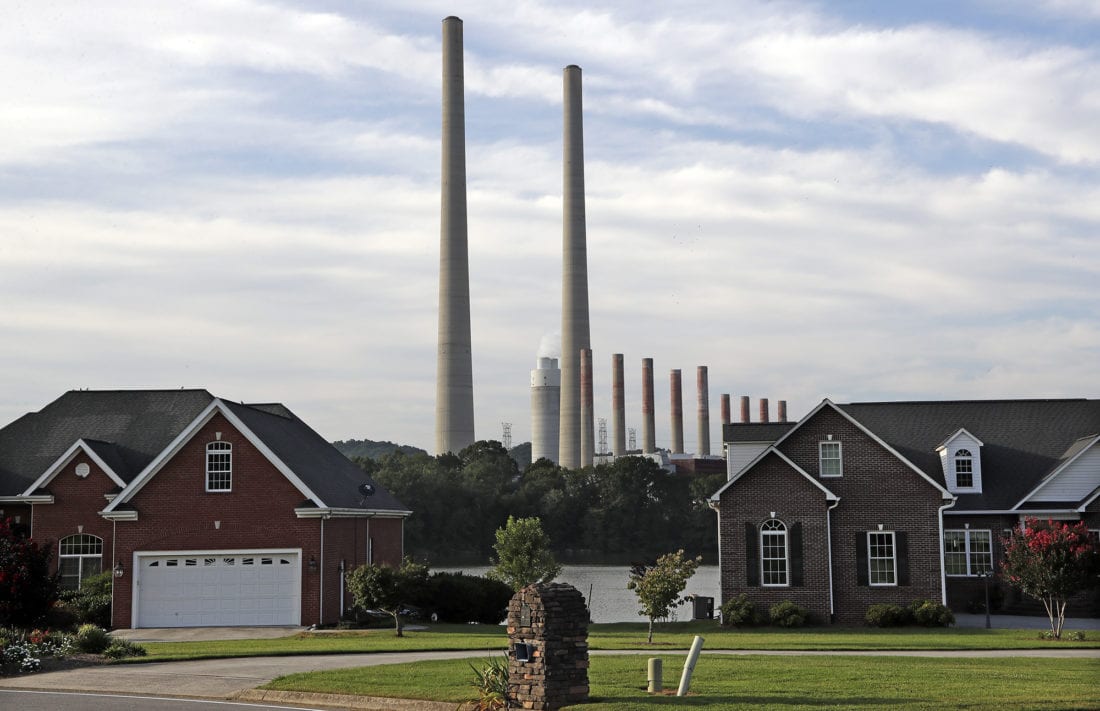50 years in, the Clean Air Act’s societal benefits still outweigh costs 10 to 1, research finds

The landmark Clean Air Act (CAA) turns 50 this month, and its impact has been dramatic: Ambient measures of pollutants have fallen more than 90% in some areas, and improvements in air quality are credited with preventing hundreds of thousands of premature deaths.
Despite this success, the debate rages on over whether the costs to industry of further pollution reductions are too high—most recently, the Trump administration declined to tighten soot rules. After five decades, has the CAA accomplished its mission?
Not even close, say two economists at the University of California, Berkeley who found a novel way to measure the compliance costs for industry by analyzing pollution offset markets. In a new working paper released today, they concluded that on average, the benefits of additional air pollution regulation exceed the costs by 10 to 1.
“We looked at many different cities, states, pollutants, and years, and found that in nearly all circumstances, regulation is currently too lenient, rather than too strict,” says Reed Walker, an associate professor at Berkeley’s Haas School of Business. “In other words, there are enormous social benefits to improving air quality just a little bit more when compared to the compliance costs for firms.”
As economists, Walker and co-author Joseph S. Shapiro, an associate professor with UC Berkeley’s Department of Agricultural & Resource Economics, wanted to understand whether the CAA had reached the point of diminishing returns. “Some of this debate stems from the remarkable improvements we’ve seen in air quality over the past 50 years,” Shapiro says. “Most economists would believe that tightening regulation further becomes incrementally more expensive for firms, which begs the question of whether an additional unit of pollution reduction is ‘worth’ the health and other benefits to society.”
Quantifying costs versus benefits
Estimates of the societal benefits of pollution abatement exist—for instance, research showed that 5% of premature mortality is from air pollution—but it’s been far more challenging to measure the true costs to producers. Walker and Shapiro found a way to do this through a CAA provision that capped pollution levels in the counties with the dirtiest air. When a manufacturer wants to open a new plant that would raise pollution above existing levels, it must either adopt cleaner technology or pay an existing plant to reduce its emissions in order to stay under the cap. These transactions—known as offsets—have led to the creation of over 500 pollution offset markets across several metro areas.
Offset prices are closely tied to the costs of additional pollution reductions. They can run into the millions of dollars, so a company only buys offsets when the cost of reducing its own pollution is even higher. That gave the researchers a way to estimate the incremental costs of pollution abatement in different cities. They assembled data on 100 offset markets in 16 states. Next, they used previous estimates of the marginal benefits of pollution reduction to assess whether the benefits of additional reductions outweigh the costs.
“We compared the incremental costs of removing one ton of pollution emissions to the incremental benefits to society of reducing the same one ton of emissions,” Shapiro says.
For example, they estimated that an existing firm in the San Francisco Bay Area would receive almost $1,500 in offset value from lowering its nitrogen oxides emissions by one ton. However, those decreased emissions are worth over $50,000 in societal benefits, due to factors such as reduced premature mortality. This led them to conclude that on average, the benefits of additional pollution regulation are about ten times the marginal costs.
This was true in every market they looked at save Houston, where they determined that regulation was too stringent on volatile organic compound emissions. The result has been marginal costs for industry that are twice as large as the estimated marginal benefits.
The researchers’ new method of calculating pollution abatement costs has led to estimates that are dramatically different than traditional estimates from the Environmental Protection Agency, possibly because EPA estimates did not account for all the economic costs that firms face. Yet even taking into account their finding that abatement costs have increased by about 6% to 9% annually over the past couple of decades, the benefits of these regulations still greatly outweigh the costs, the researchers said.
“We should always think carefully ‘on the margin’ to understand whether additional improvements in air quality are worth it,” Walker says. “In the vast majority of cities in the United States today, the answer is yes.”
Though it was not a focus of the paper, Walker and Shapiro looked at how CAA regulations could be improved. They suggested that getting rid of the current offset markets—where polluters pay for the quantity of pollution they produce—in favor of a pollution tax could be a more efficient way to improve air quality.
